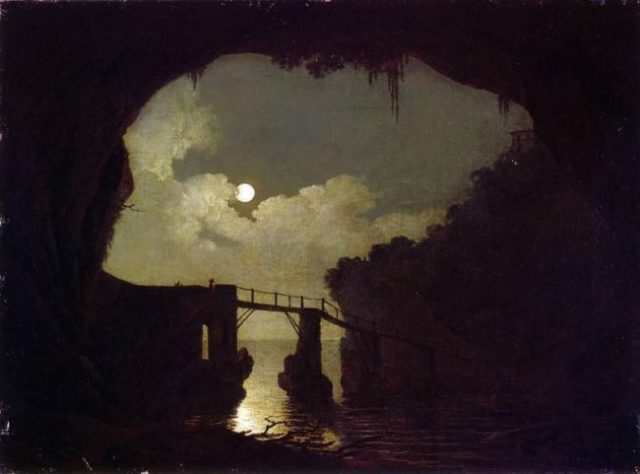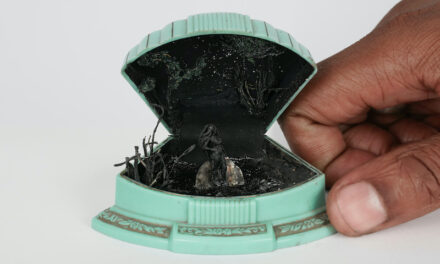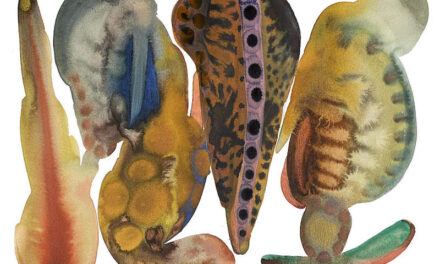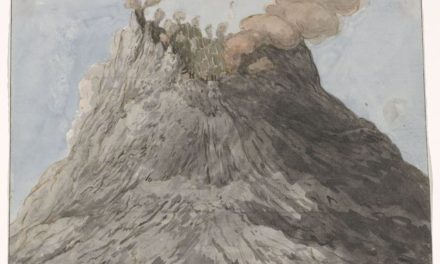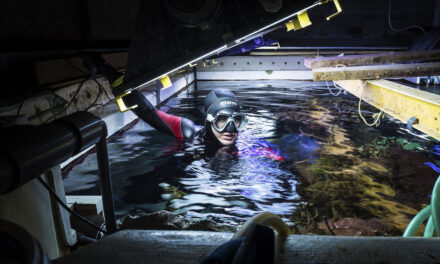Wright of Derby, Joseph. Bridge through a Cavern, Moonlight. 1791, Derby Museum and Art Gallery, Derby.
What Shapes these Clouds
by Alex Gregor
If you follow the lungomare—the road that hugs the sea—from Ostia to Circeo, you will see abandoned factories, rundown beach resorts, and waterfront restaurants. In Sabaudia, there is one of these restaurants, made entirely of fallen trees. And the people inside built it with their bare hands years ago, when the pontine was still a swamp, before the fascists filled it in.
These people—a family of four—left Rome by train. When they reached the mouth of the Tevere, where the river spills out into the sea, they took a bus south, until they came to an inlet. This was as far as the bus would go. But along the banks were little wooden rowboats tied up to pylons, so they borrowed one to paddle across. After tying up on the other side, the family crossed the dunes and the reeds until they came to the beach.
In the late afternoon, they arrived at a strip of sand where towering umbrella pines had been uprooted by a storm. The surf had climbed up the beach, where a patch of trees had stood gallantly in the marsh, and as the soil eroded from under their roots, they had come crashing down. Over time, from the changing tides and coastal winds, these trees became partially covered by sand, so that their trunks and branches had taken on the appearance of massive bones sticking out of the ground and reaching up into the skies above.
The family took one look at these trees and knew just what to do with them. They pulled out axes and hacksaws from their bags and began to chop and saw through the wood until each tree had been cut down into logs. With these logs, these people built their home.
It didn’t take long for the money to run out. After all, they had very little to begin with. But once they had, they collected more wood that had washed ashore, used it to build tables, chairs, and a sign that read: RISTORANTE. They knew the view would say the rest.
~~~
Over time, the restaurant made quite a name for itself, but only among the few who had driven down the coastline and stumbled upon the wooden sign hanging in the window. Those with an appetite, driving on the lungomare on their way to Sperlonga, Baia, or Napoli, would pull off on the side of the road, where the sand had blown in from the dunes onto the asphalt, climb out of their cars, and walk through the restaurant’s doors.
Lone travelers would usually take a seat on one of the wooden stools at the bar. Couples would nearly always nestle into a nook by the window overlooking the sea. Families—especially with kids—would take whatever was given to them, usually settling for a table in the corner, out of everyone’s way.
The children would always be the first to notice them looking down from the rafters—the bill of a marlin spearing a mackerel, the claw of a crab snipping a fishing line, the eye of a flounder seeming to gaze into their own.
“What are those?” the children would ask, pointing to the ceiling.
“What are what?” their parents would respond, looking over their shoulders.
“Animals, dear,” the adults would explain. “They’re animals.”
~~~
The father was nearly always the first to rise. He would wake up before the sun, get dressed, and make himself a coffee in the restaurant’s kitchen. Once the water had filtered through the grounds and spilled over into the kettle, he would pour himself a mug and head out onto the dock to watch the sunrise.
But before all of this, when he had first woken up, he would lay there in bed, under the sheets, with his eyes closed, and think. In these waking moments, the bed was a boat, without any oars or a sail, just an anchor that had been dropped down to the sandy bottom below.
Laying there, he could feel the boat being tossed by the waves, the bow rising with the crests, the stern sliding down into the troughs. And he could hear the water sloshing against the gunwale, the rope going slack and then tightening again as each wave tried to carry the boat away.
He saw his thoughts in the sky above—clouds passing slowly in and out of his periphery. Sometimes these clouds took on the shapes of yesterday—fishing trips to Ponza, candlelit dinners, lakeside weddings. Sometimes these clouds took on the shape of the day ahead—checking the crab traps, watering the garden, cooking dinner. And sometimes, if the father was lucky, these clouds took on the shapes of their own. When they did, the father would open his eyes, reach for his notebook and pencil on the bedside table and sketch out the shapes these clouds took on.
~~~
Late at night, after the restaurant was closed and the family had eaten their dinner, the mother liked to walk out onto the beach and collect driftwood. She would push a little wheelbarrow, with a broad wooden wheel, across the firmly-packed sand left behind by the receding tide, and when she saw a piece of wood, waterlogged, adorned in kelp and shellfish, she would kneel down, and in the dim light of her kerosene lamp, look into the driftwood, and see what she saw.
What she saw depended on how the light of her lantern fell upon the bark, or how the seaweed was draped across the branches, or how the barnacles had adhered themselves to the contours of the limb. But if she saw something in the rings of the stump, or the roots of a tree, or a forgotten plank from some capsized vessel, she would scoop that wood up into her arms and lay it down carefully into the wheelbarrow.
In the comfort of her rocking chair that sat by the dining room windows, she would pull out a pocketknife from the front of her apron and begin to whittle. She would shave away the bark from this wood, carve notches into the crevices, and chip away at the limbs, until a branch with a fork became a swordfish, or a stray shingle became the shell of a clam, or a cluster of roots became an octopus. And when she was done, she would arrange them on a dining table, sweep up the wood shavings at her feet, return to her chair, and rock.
~~~
The son, when he went out fishing at night, liked to bring with him a bottle of amaro and his violin, which had been given to him by his great-grandfather, who had carved the instrument himself out of wood that he had chopped down near his home in the thick mountain forests of the Apennino Abruzzese. The great-grandfather had taught the boy how to restring his instrument with the dried out intestines of sheep, how to rehair his bow from the mane of a horse, and how to collect rosin from the trunk of a pine.
With this violin stored in a hard leather case, the son would paddle out into the sea. After rowing past the breakers, he would pick up a fishing pole with a trolling rig, stick the barb of the hook through the eye of a fishhead, then slowly let out the line behind the boat.
If he was lucky enough to pull his rig through a school of fish and the tip of his rod jerked down to the water’s surface, then he would drop his oars, pick up his pole, and reel it in. In the boat, he had a gaf and a net, so he could easily pull them over the gunwale and down into the bucket where he’d keep them cool until returning to shore, where he would clean and fillet them before packing them on ice in the restaurant’s kitchen.
Whether the fish went after the trolling rig or not didn’t really matter because he knew once he got out far enough, all he would have to do was drop his bait down, and it would just be a matter of time before his bucket was full.
But some nights, when the moon was full, and the sea was calm, he wouldn’t bait up his poles with anything at all. He would simply row out to where he knew they would be waiting. Once he got there, he would put down the oars quietly in the hull of the boat, uncork the bottle of amaro, pull out his violin, rosin up his bow, and play.
And the fish, they would rise up to the surface, their eyes sticking out of the water, their mouths wide open, their tails slowly moving back and forth. As the son played, he would, at times, look over the side, into the water, and for as far as he could see, there weren’t only fish, but plankton, and calamari, shrimp, and octopus, oysters, and clams, bobbing up and down with the seawater for as far as the son could see.
~~~
The daughter was a painter, and when she wasn’t painting, she was out on the beach, foraging. Turtle eggs and cuttlefish ink, when mixed with crushed shell or stone, could be made into paint. The feathers of gulls and pelicans, when cleaned, could be made into brushes and pens. Nearly anything at all, the daughter was always discovering, could be used as a canvas.
From the piles of driftwood that collected in tidal pools along the beach, the daughter sifted. Some days, she pulled out the battered hull of a small boat very similar to her own brother’s. Other days, she found vacant conch shells and withered starfish trapped in netting. But one winter afternoon, when the sun was hanging low in the sky and the wind was blowing hard and the sea was churning like a stockpot in the restaurant’s kitchen coming to a roiling boil, the daughter unearthed something that she had never seen before.
Buried beneath a pile of rubbish and scraps at the base of Circeo, far down the beach from the family’s restaurant, was a massive circular woodcut, waterlogged and beaten. The work of art was as large—if not larger—than the longest banquet table in their dining room, and the artwork itself was stunning: the figure of a man wearing a long robe and bristling beard, crouching on all fours to stick his head through the firmament of the Old World, the stars and planets rotating around the flat Earth, the well-oiled gears of the cosmos moving like clockwork among nebulous clouds.
The daughter, entranced by the image, grabbed the artwork along its edges and pulled—but it would not budge. From her satchel, she took out some rope, wrapped it around the wood, and heaved—but still, the piece would not move. She looked out at the horizon and knew just what to do. Digging deep down into her satchel, she pulled out an easel, her sketchbook, her pens and brushes, as well as some charcoal, ink and paint. Standing over the woodcut, she used the charcoal to sketch the scene that lay out before her.
As she worked, she felt the sun’s warmth on her back as she traced the firmament with a piece of charcoal, extending it to a globe. And she felt the wind die down a bit when she drew a woman in the man’s place, looking at the earth from the cosmos, rather than the other way around. And she heard the waves subside as she began drawing the oceans and the continents that divide them. She traced out the rivers and filled in the lakes, and drew clouds of sand blowing across bodies of water to other continents, where the particles settled on the floor of forests and plains. Above these continents, she drew flying rivers that flowed from one ocean to another, where they eventually formed into ice and fell in sheets into the ocean, where a feast awaited.
Once she was done sketching, the daughter took out her paints and brushes and started painting over her drawing. Then, after cleaning her brushes in a jar of seawater and packing up, she headed back to the restaurant to get her family’s help to move what she had found.
By the time she returned with her father, mother and brother, the woodcut had disappeared.
~~~
The family discovered the cave at the height of summer. They were walking along the beach—the father and mother foraging shellfish from the rocks, the son throwing his casting net into the shallows—when the daughter noticed the narrow opening at the base of the cliff. Once they had all crawled into the hole and stood up in the cavernous hall, the family could not believe what they saw: a sprawling mosaic of shell and bone, a subaquatic maritime mural of the creatures that swam beneath, and at the center of it all, hung the woodcut from the year before, exactly as the daughter had painted it.
The daughter opened her satchel and took out her sketchbook, comparing her work with what hung on the cave wall. The mother, setting down the bucket of shellfish on the cave floor, noticed that her wooden figurines were suspended from the cave ceiling, their eyes seeming to stare into her own. The son, taking a swig from his bottle of amaro, saw the fish floating on the surface in the mural, their mouths open, and he could hear them singing. The father, whose eyes were just now adjusting to the dim light of the cave, realized that the ceiling, walls and floor were all covered in clouds—skyfuls of them. There were towering cumulonimbus clouds, mushrooming above churning seas. There were the feathery fingers of cirrus clouds, reaching out across bright blue skies. There were low-hanging shelf clouds rolling across coastal marshlands and estuaries. And as the father stood there, staring into these clouds, it began to rain.
In the light drizzle that fell from the ceiling of the cave, the son took out his violin and began to play, pulling the horsehair bow across sheepgut strings, making them sing. The daughter, pulling out a tambourine from her satchel, joined her brother in a pizzica, tapping and shaking the instrument quickly between her hands. And as the parents danced in circles and turns on the floor of the cave, the mother’s wooden figurines—swordfish, flounder, marlin, and mackerel; calamari, shrimp, crabs, and octopus; oysters, mussels, snails, and clams—began crawling down the walls of the cave into the pools of water that were forming on the cave floor, where the rising tide would carry them out to sea.
Alex Gregor is a writer, editor, and educator from Atlanta, Georgia currently living in Rome, Italy. He is one of the founding editors of OOMPH! Press, the banjo player in the band, The Ship & The Swell, and a member of the Department of English Language & Literature at John Cabot University. Find out more at www.marginalcomets.com

